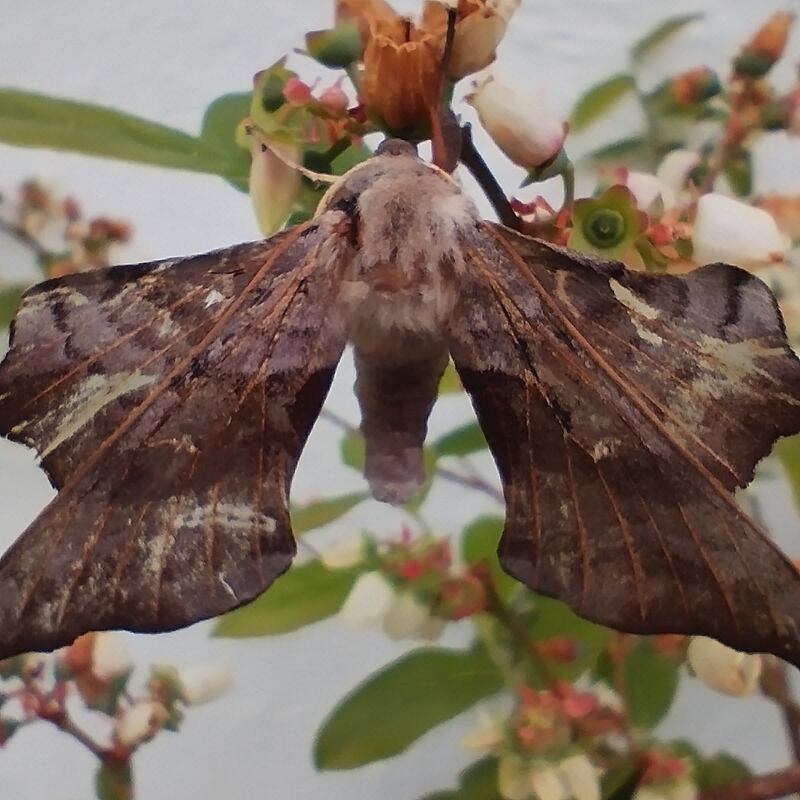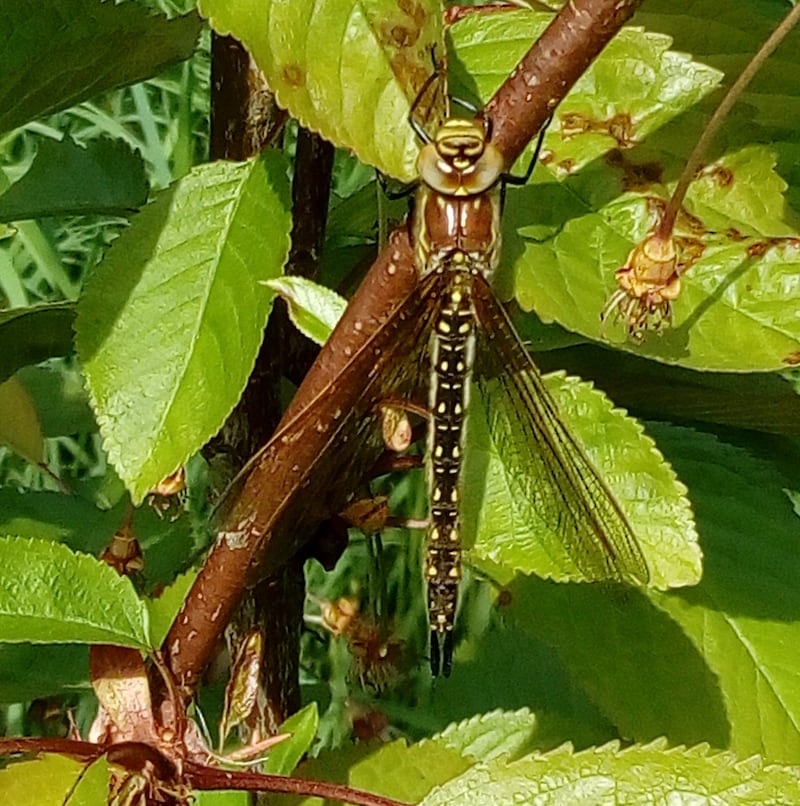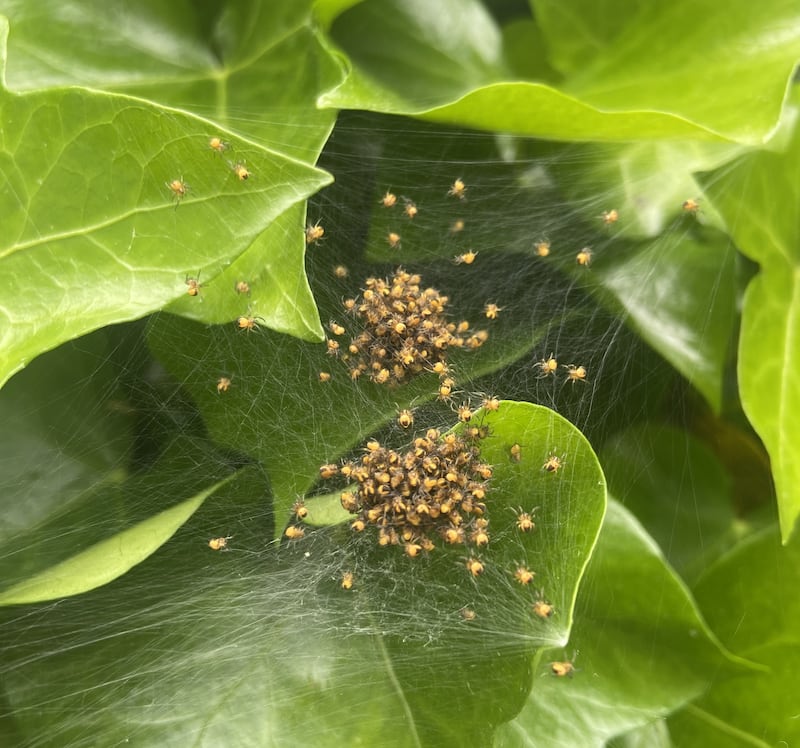I was down on my local river taking photos and I managed to get one of a cormorant with an eel, something you don’t see every day. Edward Barr, Dublin
This is true. Eels have become exceedingly scarce over the past number of years and cormorants more usually live by the coast. However, they do hunt for food along freshwater rivers and the long, straight, hook-tipped beak is very well designed for catching slippery prey. When it is sure it has beaten it into submission, it will swallow it whole headfirst – although it may take several gulps to get such a big eel down. Eels live and grow in freshwater but they are born in the Sargasso Sea and cross the Atlantic, entering our rivers as small elvers. Years later, when fully grown, they return to the Sargasso, where they mate, spawn and die. Warming oceans are reducing the numbers travelling in both directions.

I first thought there were dead leaves on my blueberry bush. What type of moth is it? Geraldine O’Daly, Co Galway
This is a very good picture of the poplar hawkmoth, which rests with its hind wings projecting in front of the forewings. This excellent camouflage convinces many predators that there is just a bunch of dead leaves there. If a curious bird should probe further, the moth will flash the two bright spots at the base of the hind wings and frighten it into leaving it alone. It is very common at this time of year.

I found this sunning itself on a young cherry tree in May. It’s difficult to identify from photos online. Alan Hancock, Co Mayo
This is a female hairy dragonfly, Brachytron pratense. The Irish name, seabhcaí an earraigh, tells us that it is a spring dragonfly and in fact it is the earliest hawker dragonfly to emerge – the only one on the wing before mid-June. It has been recorded all over Ireland, although it avoids very acidic sites, preferring fens and lowland lakes.

I came across these spiderlings in my garden this morning. I am curious to know if they are garden orb web spiderlings. Kevin Culhane, Co Kildare
That is exactly what they are. They are the young of Araneus diadematus, the garden or cross spider. These spiderlings, as they emerge from their egg sacs, are morphologically identical to their parents. They grow by moulting their outer skin after the body and legs have grown bigger inside. The old exoskeleton is peeled off, the spider expands (with great relief, no doubt) and the new soft exoskeleton hardens. If it doesn’t get all its legs out of the old exoskeleton in time before the new soft one hardens, then it may lose that limb. This process can happen five or six times as the spiderling grows to full adult size.

What are the mating flies on the redcurrant leaf in my garden? Mervyn Taylor
Your mating flies are hoverflies called sunflies (Helophilus pendulus), which are common enough in Ireland. They only fly when the sun is shining – hence the name – between April and October. After mating, the female will lay the eggs in water bodies. These hatch out into “rat-tailed” larvae, which means that they have telescopic rear ends. They can breathe oxygen through these snorkels, as it were, from the air above the water. So they can live in the most stagnant of waters, feeding on organic matter such as sewage. In really polluted waters they will be the only invertebrate life able to survive.
Please submit your nature query, observation, or photo, with a location, via irishtimes.com/eyeonnature






















